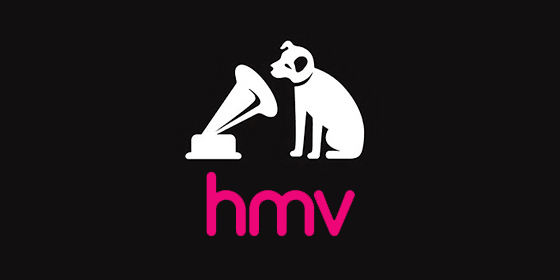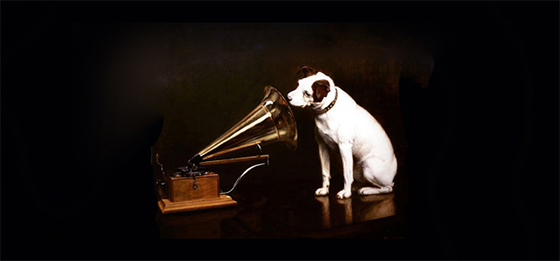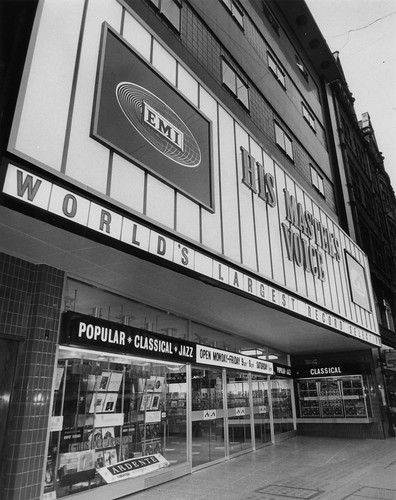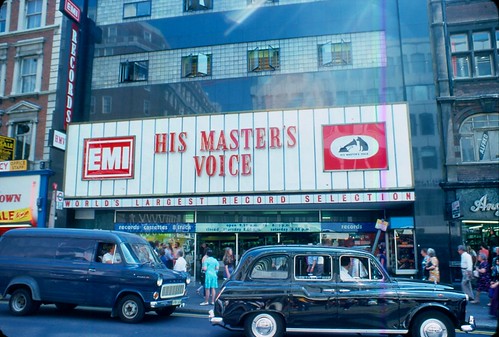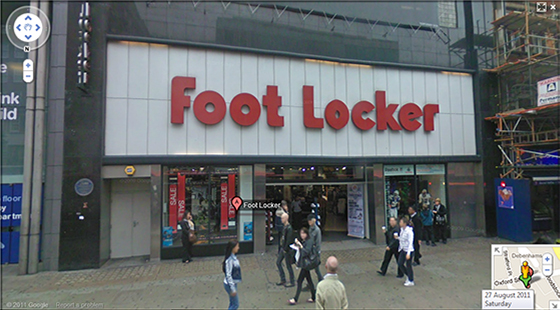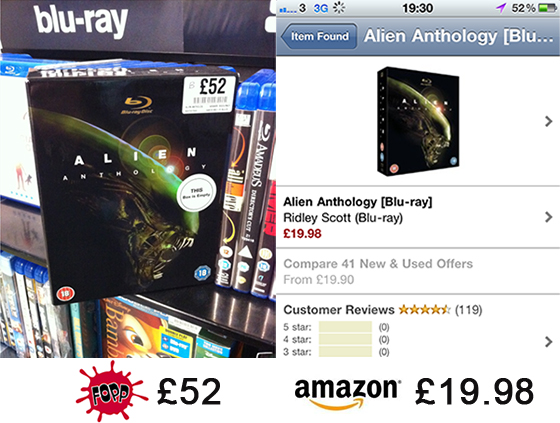Images of a flagship HMV store in London reveal much about the changing nature of retail down the years.
HMV is an iconic UK retail chain for music and films, founded in 1921 by the Gramaphone Company, which was one of the earliest companies to record and sell music to the public.
The store’s name is an acronym for “His Master’s Voice” and got its distinctive logo from a painting by English artist Francis Barraud.
It depicts a dog called Nipper, which the artist inherited from his late brother, as he listens to a recording on a wind-up gramophone.
Although for many years the company was not actually “HMV” or His Master’s Voice, the popularity of the trademark persisted and the first HMV shop opened in 1921 in London.
In the decades since then it has not only spawned shops around the world but remained a permanent retail fixture in the capital city, despite switching locations.
Recently the Voices of East Anglia blog posted some photos, including this shot from HMV’s Flickr account of what the store looked like in the 1960s.
The full gallery is worth checking out as you can see how people used to browse for vinyl records in the personal export lounge, examine what music systems and televisions used to look like and observe the stage and screen section.
It really is like an episode of Mad Men.
There is also a gallery of photos from the 1970s (now in colour!) which shows the same HMV store, though sadly not the interior.
I’m not an expert on the history of retail on Oxford Street (maybe someone can help in the comments?) but I think that HMV moved from this building and then opened a store across the street, before opening a larger store at 150 Oxford Street.
The original building is now this branch of Footlocker:
Last year HMV closed down the store near Bond Street tube station but the flagship store at 150 Oxford Street remains.
The only question is: for how long?
The recession has so far led to the closure of retailers like Woolworths, Borders and Zavvi (formerly Virgin Megastores).
On Oxford Street in particular, the closure of the Zavvi and Borders branches felt like the retail equivalent of organ removal.
Since I was a kid I’ve always browsed for music, films and books there and to see them close down is sad.
There is something to be said for the serendipity of browsing in a store, but the economics of these stores increasingly don’t add up in the age of Amazon.
How can these places compete with a retailer which has dramatically lower overheads, enviable distribution costs, vastly superior customer data and greater insight into how people shop in the 21st century?
The ‘Amazon Effect’ on retail struck me when I went into the Covent Garden branch of Fopp, the music and film retailer which HMV bought in 2007.
When it comes to music, why would I want to purchase physical CDs when I can listen to vast amounts of music on Spotify and iTunes or (semi-legally) YouTube?
This very dilemma has seen the music industry decimated over the last decade and the vast profits generated from sales be transferred into the bank accounts of two technology giants.
In 2008 Apple surpassed Walmart to become the world’s largest music retailer as they reap enormous profits from selling the inexpensive digital music (MP3 files) and the expensive hardware on which it plays (iPods and iPhones).
Google have a search site which powers the proliferation of free MP3s (just type in the name of a song and you’ll probably find it) and in YouTube owns the worlds largest unofficial music library, which you can personalise by visiting www.youtube.com/disco.
Film is probably a few years behind music, but movie companies and retailers arguably face a similar tsunami of change as digital delivery of content (e.g. Netflix streaming) replaces the physical (e.g. DVD and Blu-ray discs).
Two things struck me as I browsed the DVD and Blu-ray section of Fopp, which HMV saved in 2007.
Firstly, this is a golden age of DVD bargains: the sheer quality of films on offer for bargain bucket prices was staggering.
For example, in HMV Oxford Street you can get the following titles for around £5: All The President’s Men (1976), Breathless (1960), Chinatown (1974) and Sideways (2004).
But this is also true of Amazon where you can get hold of classic material for low prices: Citizen Kane for £3.97, The Roman Polanksi Collection (3 film collection of Chinatown, Rosemary’s Baby and The Tenant!) for £6.93 and if you want a great value blockbuster in HD, try Terminator 2 on Blu-ray for just £7.93.
In fact it was downstairs in the Blu-ray section of Fopp where the ‘Amazon effect’ really struck me.
I wanted to check out my favourite Blu-ray box set of 2010, which is the Alien Anthology (quick tip: skip the final two films, feast on the first two and put several hours aside for the incredible array of extras).
How much did the Alien Anthology Blu-ray box-set cost in Fopp? £52.
I got out my iPhone and ran a price check on Amazon, where it cost £19.98.
That’s a staggering price difference of £32.02.
Now this is just a single example of one particular product, but I suspect it is reflective of a wider shift as retail and content move into an increasingly virtual world.
Two months ago the BBC reported that HMV profits fell 14.5% in its results for the year to April and the share price has slumped dramatically over the past twelve months.
Part of their new strategy has been to open stores like the one in Wimbledon, which have a small cinema above the shop.
I went back in June and was impressed not only with the sound and projection, but the fact that they were screening up scale fare like Senna alongside blockbusters such as X-Men: First Class.
The other part of the strategy is for the group to expand into live ticketing and digital music.
But whether they can make significant profits from these avenues quickly enough remains to be seen.
Maintaining their bricks-and-mortar operations whilst trying to make inroads into the digital world is going to be a huge challenge.
This comment on Metafilter by the user memebake is perhaps a realistic note to end on:
I used to go to HMV and the independent stores on Berwick Street loads about 15 years ago, and it was fun flipping through the racks looking for things. But before I get too nostalgic, its worth reminding myself that a lot of the albums I bought in that era turned out to be rubbish. The old “hear one song on the radio then buy the album for £12 without hearing any of it” model just encouraged lazy albums with two singles and a bunch of filler tracks.
Whereas now I can get crowdsourced ratings and reviews, preview individual tracks, and then buy the thing without leaving the place I’m sitting. The problem for me nowdays is not buying albums that turn out to be rubbish, its downloading albums and then forgetting to ever go back and listen to them.
Business (we are often told) is all about adapting to new opportunities and taking risks and all that stuff. The old music retail business failed to do that and basically let Amazon and Apple take over. It was obvious for years and years that large-store-large-inventory wasn’t going to be able to compete. They wont get any sad goodbyes from me. I still try and go to Selectadisc now and then though.
> Find out more about HMV, Fopp and Amazon at Wikipedia
> Flickr Gallery of London 35 Years Ago
